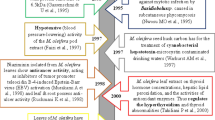Abstract
Corn, sorghum, barley, Italian ryegrass (IRG), and alfalfa have long been used in human and/or animal diets. While their nutritional information is widely available, their potentials for anti-oxidation, anti-inflammation, and anti-tumor are barely explored. In the present study, several serial extracts were prepared from 70% methanol extracts of these forage crops and their bioactive potentials were investigated using cell-free and cell-mediated experimental systems. Chloroform extracts in this study generally showed stronger activity to scavenge hydroxyl radicals and superoxide anions than butanol or water extracts. IRG and sorghum chloroform extracts especially almost completely suppressed the lipopolysaccharide-mediated production of nitric oxide, tumor-necrosis factor-α, and interleukin-6. These extracts also inhibited dramatically the viability and DNA synthesis of human skin dermatofibrosarcoma cells without a toxic effect on primary cultured control cells. These beneficial effects appeared to be associated with the amount of flavonoids contained in the extracts.
Similar content being viewed by others
References
Mates JM, Sanchez-Jimenez FM. Role of reactive oxygen species in apoptosis: Implications for cancer therapy. Int. J. Biochem. Cell Biol. 32: 157–170 (2000)
Gandhi S, Abramov AY. Mechanism of oxidative stress in neurodegeneration. Oxid. Med. Cell Longev. 2012: 428010 (2012)
Lee JC, Son YO, Pratheeshkumar P, Shi X. Oxidative stress and metal carcinogenesis. Free Radical Bio. Med. 53: 742–757 (2012)
Rice-Evans CA, Miller NJ, Bolwell PG, Bramley PM, Pridham JB. The relative antioxidant activities of plant-derived polyphenolic flavonoids. Free Radical Res. 22: 375–383 (1995)
van Poppel G, van den Berg H. Vitamins and cancer. Cancer Lett. 114: 195–202 (1997)
Jomova K, Valko M. Advances in metal-induced oxidative stress and human disease. Toxicology 283: 65–87 (2011)
Firuzi O, Miri R, Tavakkoli M, Saso L. Antioxidant therapy: Current status and future prospects. Curr. Med. Chem. 18: 3871–3888 (2011)
Awika JM, Rooney LW. Sorghum phytochemicals and their potential impact on human health. Phytochemistry 65: 1199–1221 (2004)
Cuevas Montilla E, Hillebrand S, Antezana A, Winterhalter P. Soluble and bound phenolic compounds in different Bolivian purple corn (Zea mays L.) cultivars. J. Agr. Food Chem. 59: 7068–7074 (2011)
Zilić S, Serpen A, Akıllıoğlu G, Gökmen V, Vančetović J. Phenolic compounds, carotenoids, anthocyanins, and antioxidant capacity of colored maize (Zea mays L.) kernels. J. Agr. Food Chem. 60: 1224–1231 (2012)
Quinde-Axtell Z, Baik BK. Phenolic compounds of barley grain and their implication in food product discoloration. J. Agr. Food Chem. 54: 9978–9984 (2006)
Gray AM, Flatt PR. Pancreatic and extra-pancreatic effects of the traditional anti-diabetic plant, Medicago sativa (lucerne). Brit. J. Nutr. 78: 325–334 (1997)
Bora KS, Sharma A. Phytochemical and pharmacological potential of Medicago sativa: A review. Pharm. Biol. 49: 211–220 (2011)
Halliwell B, Gutteridge JMC, Aruoma OI. The deoxyribose method: Simple “test-tube” assay for determination of rate constants for reactions of hydroxyl radicals. Anal. Biochem. 165: 215–219 (1987)
Gotoh N, Niki E. Rates of interactions of superoxide with vitamin E, vitamin C, and related compounds as measured by chemiluminescence. Biochim. Biophys. Acta 1115: 201–207 (1992)
Baek JA, Son YO, Fang M, Lee YJ, Cho HK, Whang WK, Lee JC. Catechin-7-O-β-d-glucopyranoside scavenges free radicals and protects human B lymphoma BJAB cells on H2O2-mediated oxidative stress. Food Sci. Biotechnol. 20: 151–158 (2011)
Kook SH, Son YO, Choe Y, Kim JH, Jeon YM, Heo JS, Kim JG, Lee JC. Mechanical force augments the anti-osteoclastogenic potential of human gingival fibroblasts in vitro. J. Periodontal Res. 44: 402–410 (2009)
Kujala TS, Loponen JM, Klika KD, Pihlaja K. Phenolics and betacyanins in red beetroot (Beta vulgaris) root: Distribution and effect of cold storage on the content of total phenolics and three individual compounds. J. Agr. Food Chem. 48: 5338–5342 (2000)
Qawasmeh A, Obied HK, Raman A, Wheatley W. Influence of fungal endophyte infection on phenolic content and antioxidant activity in grasses: Interaction between Lolium perenne and different strains of Neotyphodium lolii. J. Agr. Food Chem. 60: 3381–3388 (2012)
Hu C, Kitts DD. Studies on the antioxidant activity of Echinacea root extract. J. Agr. Food Chem. 48: 1466–1472 (2000)
von Harsdorf R, Li PF, Dietz R. Signaling pathway in reactive oxygen species-induced cardiomyocyte apoptosis. Circulation 99: 2934–2941 (1999)
Lee JC, Lim KT, Jang YS. Identification of Rhus verniciflua Stokes compounds that exhibit free radical scavenging and anti-apoptotic properties. Biochim. Biophys. Acta 1570: 181–191 (2002)
Chan PC, Xia Q, Fu PP. Ginkgo biloba leave extract: Biological, medicinal, and toxicological effects. J. Environ. Sci. Heal. C 25: 211–244 (2007)
Ferretti G, Bacchetti T, Belleggia A, Neri D. Cherry antioxidants: From farm to table. Molecules 15: 6993–7005 (2010)
Izzi V, Masuelli L, Tresoldi I, Sacchetti P, Modesti A, Galvano F, Bei R. The effects of dietary flavonoids on the regulation of redox inflammatory networks. Front. Biosci. 17: 2396–2418 (2012)
Yu JY, Kim JH, Kim TG, Kim BT, Jang YS, Lee JC. (E)-1-(3,4-Dihydroxyphenethyl)-3-styrylurea inhibits proliferation of MCF-7 cells through G1 cell cycle arrest and mitochondria-mediated apoptosis. Mol. Cell 30: 303–310 (2010)
Choi KC, Chung WT, Kwon JK, Jang YS, Yu JY, Park SM, Lee JC. Chemoprevention of a flavonoid fraction from Rhus verniciflua Stokes on aflatoxin B1-induced hepatic damage in mice. J. Appl. Toxicol. 31: 150–156 (2011)
Rice-Evans CA, Miller NJ, Paganga G. Structure-antioxidant activity relationships of flavonoids and phenolic acids. Free Radical Bio. Med. 20: 933–956 (1996)
Kim SS, Son YO, Chun JC, Kim SE, Chung GH, Hwang KJ, Lee JC. Antioxidant property of an active component purified from the leaves of paraquat-tolerant Rehmannia glutinosa. Redox Rep. 10: 311–318 (2005)
Stochmal A, Piacente S, Pizza C, De Riccardis F, Leitz R, Oleszek W. Alfalfa (Medicago sativa L.) flavonoids. 1. Apigenin and luteolin glycosides from aerial parts. J. Agr. Food Chem. 49: 753–758 (2001)
Shukla S, Gupta S. Apigenin: A promising molecule for cancer prevention. Pharm. Res. 27: 962–978 (2010)
Author information
Authors and Affiliations
Corresponding author
Rights and permissions
About this article
Cite this article
Hwang, JM., Choi, KC., Bang, SJ. et al. Anti-oxidant and anti-inflammatory properties of methanol extracts from various crops. Food Sci Biotechnol 22 (Suppl 1), 265–272 (2013). https://doi.org/10.1007/s10068-013-0076-y
Received:
Revised:
Accepted:
Published:
Issue Date:
DOI: https://doi.org/10.1007/s10068-013-0076-y




